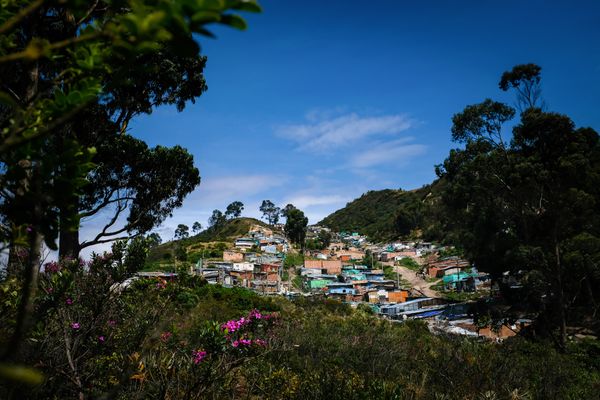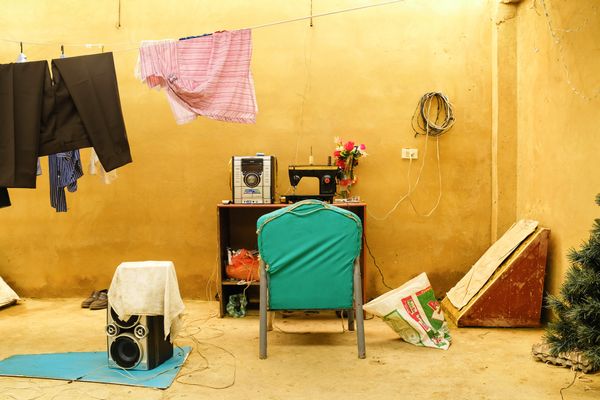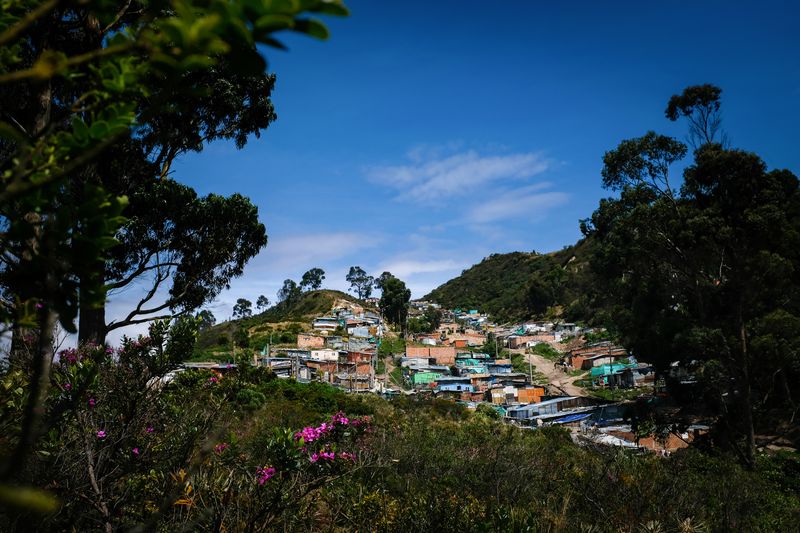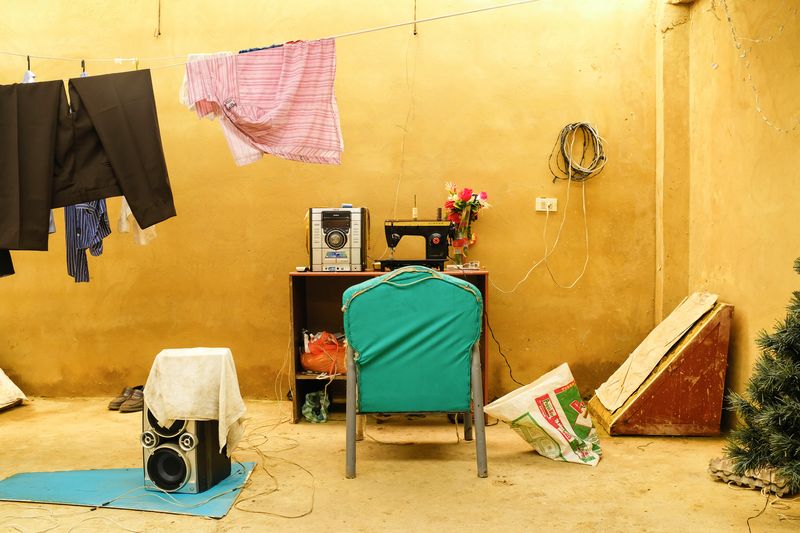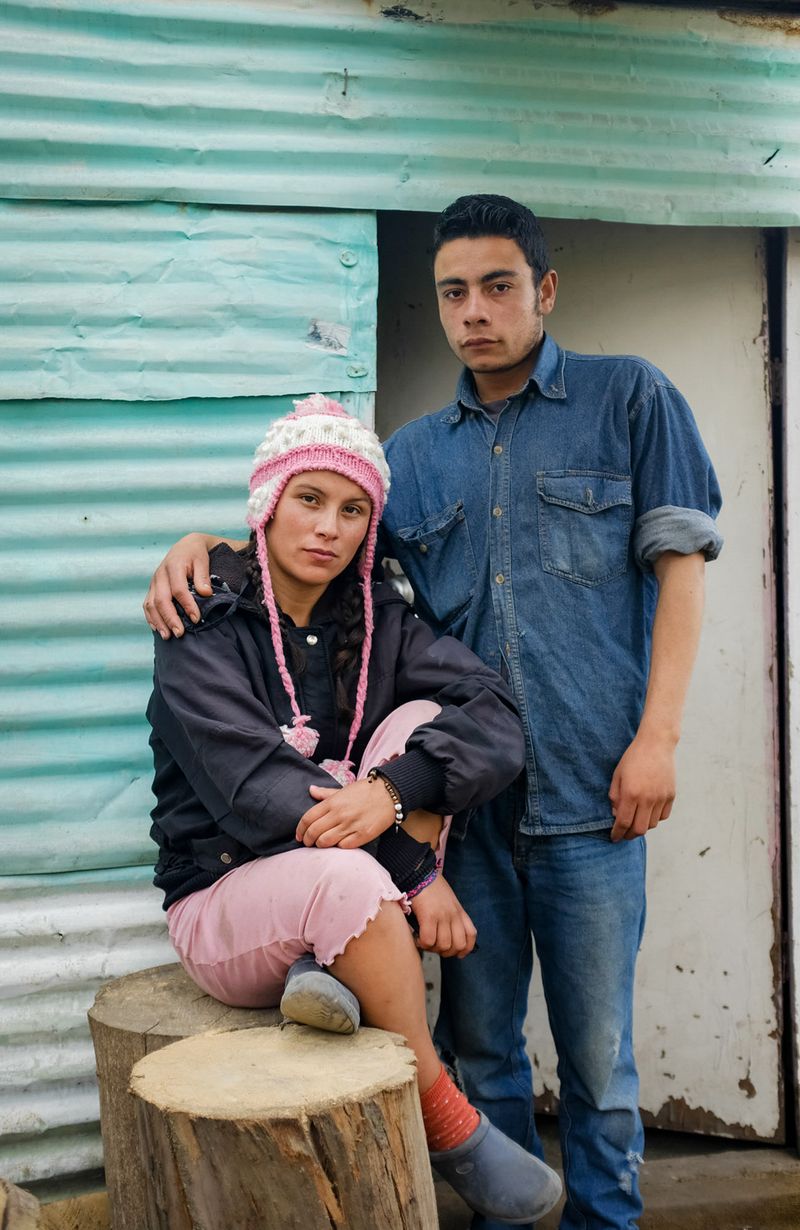Uncovering a Secluded Suburban Neighbourhood in Bogotá
-
Published24 Jul 2019
-
Author
Colombian photographer Ana Vallejo documents the distinctive lives of people residing in the town of San Germán on the outskirts of Bogotá as they fight against widespread marginalisation and discrimination.
Colombian photographer Ana Vallejo documents the distinctive lives of people residing in the town of San Germán on the outskirts of Bogotá as they fight against widespread marginalisation and discrimination.
Entre Nubes is a documentary and artistic exploration of San Germán, an illegal settlement in southeast Bogotá, Colombia. Ana Vallejo focuses on the life and soul of its inhabitants, many of whom have migrated from rural parts of the country, fleeing violence or searching for better living conditions in the capital. Vallejo describes the community of San Germán as a kind of microcosm of vulnerable populations, where victims of the armed conflict, ex-military, ex-guerrilla, native people, and economically displaced families from within Bogotá converge. In this series, Vallejo attempts to unravel their sense of close community living and challenges people's negative preconceptions of the population.
For how long have you been working on this project, Entre Nubes, and how were you introduced to the location?
I started going to San Germán three years ago. I was covering different stories with a journalist from Poland - Ania Kiedrzynek. We went to San Germán because someone told us that there was a very interesting leadership process there - we were told to talk to Arley, the leader of the community, a 26-year-old man from Colombia's Pacific Coast. We were mesmerised by the place and the beauty of the eastern hills. Arley and his friends were energetic and warm, walking around the neighbourhood dressed in camouflaged clothes with knives and walkie-talkies. They cooked for us and played and sang traditional afro songs from the Pacific. You could feel their young rebellion and hope in the air; the resistance to their life situation.
© Ana Vallejo, from the series Entre Nubes
You have approached the story by documenting weapons in still life settings as well as photographing portraits - could you tell us more about your motivations?
Whilst editing and reviewing my photographs of the place, I noticed that it was very difficult to capture the day-to-day actions. The houses are dark because sometimes they do not have any windows and people take shelter in them and there are no common spaces. I wanted to talk about displacement; the absence of the government and the law and the self-management, but also the strength and resilience of these people that against all obstacles look to change their immediate reality. I wanted to talk about people, and my way of approaching this was to do portraits of them. The colours and light of the portraits are in contrast to their strong life testimonies. I wanted to play with that contrast because despite the tragedy there is also dignity, hope, and beauty in San Germán.
The same thing happened with how I sought to portray violence. I discovered through this project just how many spheres of our life in Colombia are stained by violence. I was not interested in photographing violent scenes that could justify our stigmas towards these communities. I decided instead to conceptualise it by photographing objects and weapons that contradict the colourful, everyday materials such as sheets and tablecloths found in homes across the neighbourhood. I have also come to the realisation recently, that in addition to the violence, I want to talk about construction. San Germán is being built by its own people. Hence, I am also photographing construction tools and materials that are important for the community.
© Ana Vallejo, from the series Entre Nubes
In the past, you have mentioned in other interviews that without empathy, the photographer cannot achieve intimacy and honesty in their photographs. Please explain how empathy has impacted your work.
Empathy is one of the reasons I am a photographer. I really like to meet other people and learn more about reality from their life experiences. I try to connect with people in San Germán through my emotions. After three years it is beautiful to see that we have developed a meaningful connection. I am very interested in human relations and our collective nature and I have learned a lot from Colombia’s conflict and reality through this community.
I understand Colombia has one of the highest percentages of internally displaced people in the world - do you think you are looking to create awareness of this through your project?
Yes, the war in Colombia and the effects of violence and internal displacement are undoubtedly an important motivation. This project is my way of seeing and understanding significant aspects of Colombian identity through the day-to-day life of a small neighbourhood in Bogota's southern peripheries. It also motivates me to show what’s behind the stigma of an informal settlement. The reality and the people behind this stigma are much more complex, rich and colourful and I want to highlight that. Above all, I seek to know and understand realities in my country with which I had not come into contact before.
© Ana Vallejo, from the series Entre Nubes
People may have negative impressions about illegal neighbourhoods, but what are your feelings about the sense of community in San Germán?
San Germán is self-managed, so community life here is a necessity. Although this is beautiful, violence makes this cohesion very fragile. Even so, it is evident that the future of San Germán depends on its own leadership and the community's strength and union.
To finish, Ana, San Germán is located in a National Park - is the population endangering the flora and fauna of there?
San Germán borders the Entre Nubes National Park. There is no doubt that the neighbourhood has an impact on the ecosystem. San Germán does not have a sewage system, so waste waters go straight into a water spring and garbage is not properly managed either. There are independent groups of urban planners who have been working in the neighbourhood trying to help the community to improve this situation.
The people, though, are not the only agents that have an impact on the park. There are many mega-urbanisation projects of social housing in the area. Many of these have been denounced for being corrupt and delivering unfinished apartments of barely 20m2 that result in overcrowding and insecurity. These constructions have a greater impact and many neglect the precautions that must be taken with waste management.
There are also legal and illegal brick kilns. In the end, in my view, the greater issue is the exponential growth that occurs in the capital of a centralised country and how this exponential growth affects the southern outskirts of the capital resulting in informal economies and neighbourhoods. Living under informality is delicate as it excludes people from the regulating parameters of the state. This exclusion can deny them the possibility to access state services and can also deny the guarantee of their fundamental rights in the event that they are infringed.
-------------
Ana Vallejo is a Colombian photographer based in Bogotá. She describes her photographic practice as a vehicle to understand the world in an experiential way as she looks to focus on social paradoxes and their complexities. Follow her on PHmuseum and Instagram.
Verónica Sanchis Bencomo is a Venezuelan photographer and curator based in Hong Kong. In 2014, she founded Foto Féminas, a platform that promotes the works of female Latin American and Caribbean photographers. Follow her on Twitter and Instagram.
-------------
This article is part of In Focus: Latin American Female Photographers, a monthly series curated by Verónica Sanchis Bencomo focusing on the works of female visual storytellers working and living in Latin America.
